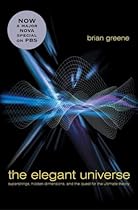Thu 29 Mar 2007
Brian Greene (left) and Lawrence Krauss (right), participated in a String Theory Debate last night at the Natural History Museum (Smithsonian Associates Program), with Michael Turner acting as moderator.
More pictures are also available on the photography page.
I recorded the first 75 minutes of the debate (audio only), as well as the last 15 minutes (as video) using my Canon S3. I am very pleased with the audio quality from this camera (samples in stereo at 44khz).


Both Greene and Krauss have written popular books on science, with Greene’s The Elegant Universe selling a million copies. This book was made into a NOVA mini-series, The Elegant Universe, which Greene hosted. Greene’s latest book is The Fabric of the Cosmos.
Krauss has written a number of books, including The Physics of Star Trek and his most recent, Hiding in the Mirror
This was a very lively debate, with Brian Greene taking the “pro” String Theory side (probably since he is a major researcher in the field), and Lawrence Krauss taking the “con” side. Krauss was quick to point out that they are on the same side, unlike the “debates” he has against Intelligent Design proponents (or alien abductees). Both are working scientists; Professor Greene is at Columbia University (physics and math), and Professor Krauss is at Case Western Reserve University (physics and astronomy). Professor Turner is at the University of Chicago.
What is string theory? String theory is an attempt at unification. The theory attempts to unite things that are very big (general relativity; gravity) with the very small (quantum mechanics). Such a unifying theory is very appealing to scientists, but even Einstein was unable to reconcile the two areas.
I’ll summarize (and paraphrase) the points each made below, but it was a long debate, so I’d suggest interested parties listen to the audio recordings.
Greene: String theory is an attempt to unify gravity and general relativity with quantum mechanics. As you go smaller and smaller you see matter made up of atoms (made up of electrons surrounding a nucleus). The nucleus is in turn made up of protons and neutrons, and these in turn are made up of quarks. String theory speculates that if you go a billion billion times smaller, you see that quarks are in turn made up of vibrating “strings”, or “filaments”. Think of a violin string — as it vibrates in different ways, it produces different “notes”. “Elementary” particles, like quarks, can be likened to the “notes” vibrating strings make.
Krauss: The problem is you can’t actually test a single aspect of this; there is no way to “see” something a billion billion times smaller than a quark. [Greene: yes, I said that.]
Krauss: Another issue is that these “strings” are vibrating in a universe that has more dimensions (about 10-11) than the 3 of space and 1 of time we are familiar with. What are these “extra” dimensions? Do they have any basis in reality, or are they just there to make the math work out?
Both agreed that *maybe* the new Large Hadron Collider at CERN will produce something that verifies something, but that’s a big maybe.
Greene did make a comment early on: “If you ask me do I believe in string theory, then the answer is ‘no’ – it can’t be tested yet. But do I believe it is the best shot we have at a unifying theory, then ’emphatically yes’ “. [see the audio recording for the exact quote].



March 30th, 2007 at 9:34 am
[…] Science has a report on the debate. Also, there’s a report (with audio) from a blogger at the Hooded Hawk […]